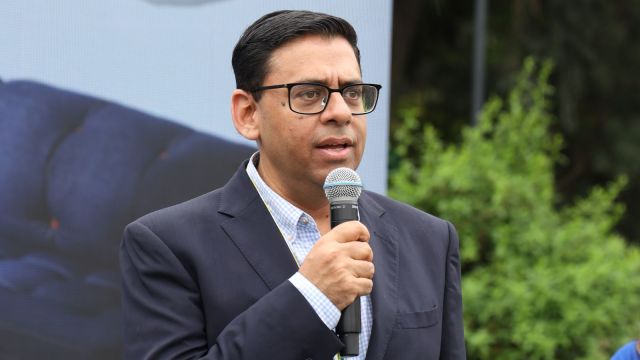After launching online delivery in Delhi-NCR and other northern cities—and with two large stores under construction in Gurgaon and Noida—IKEA is now eyeing smaller format stores in the region. In a conversation with Aggam Walia, IKEA India’s country commercial manager, Adosh Sharma discusses what these stores might look like, the company’s growth levers amid a consumption slowdown, and its expanding focus on food.

IKEA India is exploring different store formats, especially in Delhi-NCR. Can you tell us more about what these formats could look like?
We need to have smaller stores that are able to address customer needs better. Our ambition is ‘one click, 30 minutes away’. One click, which means we’re always available online, and 30 minutes from any physical touch point that is available to a customer. We have different formats that we will look at, like planning order points. If you’re planning, buying, or refurbishing a house, you don’t need to go to the large store. You can go to your neighborhood planning order point, sit there, plan the entire house and come back. Then, we’ve got the shops, where we look at smaller concepts roughly starting at 20,000, going up to 40,000 (square feet), where people can come on a more frequent basis to try our accessories and certain furniture categories.
IKEA’s expansion into north India comes amid a slowdown in consumption. How do you read the current scenario?
We are still in an expansion phase. This phase allows us to generate the kind of growth we’ve been searching for. Secondly, our entire pricing bandwidth is quite large. A thousand products for under Rs 200, going right up to the sofas coming for around Rs 50,000, you’re able to attend to a much larger diaspora. Thirdly, our products are not limited to a certain product class, whereas in some other places you would get only accessories or a certain type of furniture. We start from a spoon going up to a kitchen, so the choice that people have is far and wide. It helps us as people then experiment and take in the products much more. Lastly, our online business has been doing fairly well. That’s really helping us penetrate much better.
Food is at the centre of the IKEA experience. How is this segment performing?
India is one of the few countries in the world where nearly 99 per cent of the food we make and sell is sourced from within India. We continuously update our menu. Last Diwali, we introduced a festive menu that ran through Christmas, featuring distinctly Indian treats like kebabs and rolls. In the summer, we launched coolers and popsicles. There’s a lot of innovation we keep trying. Food currently contributes 7-8 per cent in the total business, taking online and offline together. We believe that this could be one big growth area for us.
Story continues below this ad
Like with the food menu, will we also see a furniture range that’s specific to India?
While we are looking at the global range because we have 80 years of experience to say it fits well, we also work with local adaptation by presenting the range in a way that keeps some of the local needs in mind. For example, a lot of people in India use the bedroom for eating. So, how do you incorporate some of those concepts to create an eating solution on the bed itself. Then, in the living room, how do you create more spaces in a small space. People visiting stay back, so how can you have an L-seater which is also a sofa bed. Apart from that, there is also an effort on creating an India-specific range where we are very keenly understanding the Indian tastes. We’re also trying to create India as a hub for production.































